By John Brown
In June 1943, with the war on the island of New Guinea in its last stages, a proposal was under discussion in Washington that the huge Japanese base at Rabaul on New Britain be bypassed and “left to wither on the vine.”
General Douglas MacArthur, Commander in Chief Southwest Pacific Area, opposed bypassing the Japanese stronghold, stating that he needed Rabaul as a forward naval and air base to protect his right flank as he advanced on the Philippines. The issue was resolved at the Quebec Conference in August 1943, when the combined chiefs of staff decided that Rabaul would not be captured but would be encircled, isolated, and left to wither. MacArthur agreed and set about transforming a bypassing maneuver into a brilliant strategic concept.
Bypassing Rabaul
On December 1, the American 112th Cavalry Regiment landed at Arawa on the southern coast of New Britain. On December 26, the 1st Marine Division landed at Cape Gloucester, on the western coast of the island, and American and Australian troops landed at Saidor and Sio on the New Guinea coast of the Vitiaz Strait, across from Cape Gloucester.
At the same time, Admiral William F. Halsey’s South Pacific Command landed a large force of Americans at Torokina on Empress Augusta Bay, Bougainville, where an air base was quickly established from which to launch attacks on Rabaul. On February 15, 1944, the 3rd New Zealand Division seized Nissan in the Green Islands, 117 miles from Rabaul, and established air and torpedo boat bases. In February also, the U.S. 1st Cavalry Division landed on Los Negros Island in the Admiralties, overwhelmed strong Japanese resistance, and within weeks had built an immense maritime facility at Seeadler Harbor.
On March 8 and 20, the last acts in the campaign to isolate Rabaul were landings at Talasea, New Britain, and Emirau Island between New Ireland and the Admiralties. Rabaul was now, with its serviceable aircraft and naval units withdrawn north, militarily sterilized, and Japanese forces in northeastern Australian New Guinea and on Bougainville had been cut off.
MacArthur then made a tremendous jump forward. On April 22, with an armada of 158 ships, he made a 400-mile leap to land elements of the U.S. Sixth Army at Aitape, the last outpost in Australian New Guinea, and at Hollandia over the border in Dutch New Guinea (now the Indonesian province of Irian Jaya). Japanese reaction was comparatively weak.
American forces moved ahead on May 17 to Wadke, on May 27 to Biak Island, and on July 2 to Geelvink Bay. On July 30, Americans made their last landing on the huge island of New Guinea, at Sansapor.
On September 15, American forces landed on Morotai in the Moluccas, bypassing a strong Japanese garrison on nearby Halmahera Island, and began building a base for the invasion of the Philippines. A month later, on October 20, the Philippines were invaded at Leyte, fulfilling MacArthur’s pledge to return.
“You Take Care of the Rear…”
Earlier in the year, MacArthur had said he intended to use three Australian Imperial Force (AIF) infantry divisions, the6th, 7th, and 9th, veterans of the Middle East, North Africa, and New Guinea campaigns, in his assault on the Philippines, but it now seemed that he had no intention of using them; they were not included in his invasion plans.
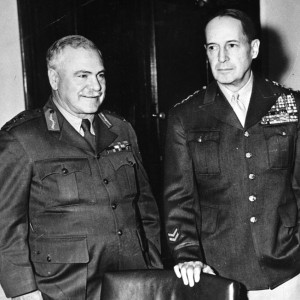
In a press conference in July 1945, General Sir Thomas Blamey, commander in chief of the Australian Army, said, “General MacArthur said to both myself and Mr. John Curtin [the Australian Prime Minister] ‘I will go to the Philippines and take the First Australian Corps with me.’ That never eventuated. The Americans didn’t want anyone else to take part.”
Other comments at the time were: “It was to be an all-American show,” and “It had more to do with American prestige and MacArthur’s not inconsiderable vanity.”
When MacArthur arrived in Australia from the Philippines in 1942, he told Prime Minister John Curtin, “You take care of the rear and I will handle the front.” In agreeing with this, and as Australia was on a wartime footing, the Australian government in effect surrendered a large proportion of its national sovereignty to MacArthur.
In 1944-1945 Australia, total population about seven million, had proportionately more men and women in uniform than either the United States or the United Kingdom. It had the men, but it lacked the political, bureaucratic, and military framework to make and execute defense policies. The government lacked the expertise to make decisions on military strategy—these decisions had always been left to MacArthur; and MacArthur’s interest was now, with the end of the war in New Guinea, caught up almost entirely with his return to the Philippines.
The American move north toward the Philippines had bypassed three large forces of Japanese—93,000 on New Britain mainly on the Gazelle Peninsula and around Rabaul, 37,000-40,000 on Bougainville, and 35,000 in the Aitape-Wewak area of northwest New Guinea. The Australian government was divided as to what should be done about them.
There were those who thought that continued active fighting by Australian troops would strengthen Australia’s position in the coming peace treaty negotiations and foresaw a wider and more powerful Australian position in the Pacific in the future. There were those who were more concerned with the social and political challenges that Australia would face in the coming peace and the opportunity to introduce reforms in those spheres; they only wanted to see an end to the fighting. And there were those who simply thought the Japanese should be removed as soon as possible from all Australian mandated territories and the native peoples liberated.
Australia’s Special Interest in New Guinea
In July 1944, Prime Minister Curtin in discussion with MacArthur said that Australia had a special interest in using Australian troops to clear the Japanese from the New Guinea territories. MacArthur agreed. Australian troops relieving American troops of their neutralization role would release thousands of them for his Philippines offensive. He informed General Thomas Blamey that Australian forces were to assume responsibility for the neutralization of the Japanese in Australian and British territories in the Southwest Pacific by November 1. Blamey responded that he would need only six Australian brigades for this, the equivalent of two divisions, one-third of the number of American troops presently carrying out the neutralization role. MacArthur insisted he use six divisions.
A number of discussions resulted in agreement. The minimum Australian forces to be used to neutralize the Japanese were Bougainville, four brigades; Emirau, Green, Treasury, and New Georgia islands, one brigade; New Britain, three brigades; the New Guinea mainland, four brigades. With MacArthur doubling the number of brigades Blamey had proposed, Blamey would have the numbers to undertake offensive actions that he would not have initiated with only six brigades.
Blamey placed Lt. Gen. Sir Vernon Sturdee’s First Army headquarters at Lae on the New Guinea coast to control the forces engaged in the neutralization campaign. On October 18, he issued an operation instruction defining the role of the First Army as “by offensive action to destroy enemy resistance as opportunity offers without committing major forces.” When reporting to the Advisory War Council, he remarked: “Torokina [Bougainville] has been an inactive area but Australian forces would not perhaps be quite so passive.”
Australians in Bougainville
Bougainville, about 125 miles long by 40 miles wide at its widest, is dominated by a long volcanic mountain chain. The coastal shelf, from narrow to about 10 miles wide, is covered with thick jungle dotted with minor areas of cultivation. It has an extremely heavy rainfall, and many rivers flow down from the mountains and across the coastal areas to the sea. The Japanese, whose strength was not known with any certainty but was actually close to 40,000, were in three main locations—to the north around Buka Passage, in the east near Numa Numa and Kieta, and in the south around Buin and Mosigetta.
Major General William Bridgeford’s 3rd Division of Lt. Gen. Sir Stanley Savige’s Second Corps began landing at Torokina on the northern edge of Empress Augusta Bay on October 6, coming in as shipping was made available since it was in short supply, with the majority marked for American operations in the Philippines. Green and Emirau Islands and Treasury Island off southern Bougainville were garrisoned by the 23rd Brigade.
The Australians were amazed at the luxury they inherited from the Americans at Torokina—folding cots to sleep on, wooden mess huts, shower units, recreation rooms, refrigeration, ice cream and soft drink factories, a cinema…. On their part, the Americans were amazed by the Australians who, immediately after arrival, began extensive patrolling inland checking the topography as available maps were woefully inaccurate, estimating the numbers of Japanese and where they were located, assessing their defensive positions, and observing the gardens they had established to feed themselves until, as they believed, they would be reinforced and begin another offensive.
The Japanese had made two attacks on the Americans in March and had been soundly defeated. Since then an unofficial truce had existed, a policy on both sides of live and let live. For the Americans it was “containment,” and the Japanese seemed to be content to be contained, at least for the present.
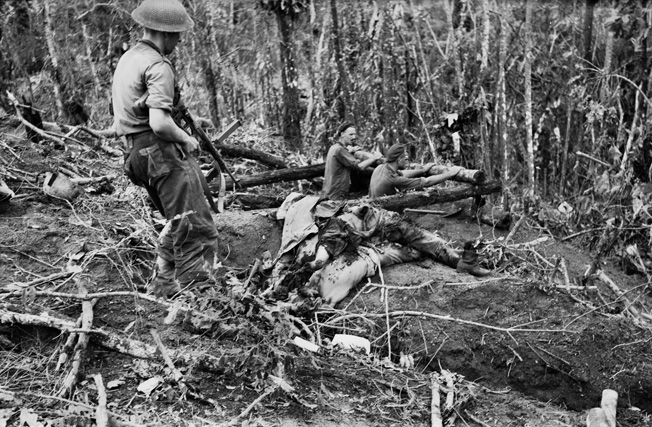
Beginning the Offensive
The 9th Battalion took over from the Americans on the Numa Numa Trail, north of Torokina. Here it was typical of the unofficial truce with American and Japanese positions facing each other, with outposts sometimes as close as 50-60 yards apart. Two days after the 9th Battalion took over, patrols had reconnoitered a Japanese outpost on the nearest knoll, only about 60 yards away and consisting of six trenches. On the morning of the third day the battalion’s mortars fired on the position, and Lieutenant John Deacon led a leap-frogging attack on the knoll. They reached the position as Japanese soldiers were jumping out of the trenches.
The action was over quickly, with 20 Japanese dead on the knoll, including an officer and a sergeant. Two Australians were killed and six wounded, including Deacon. The platoon was still occupying the position that evening when about 40 Japanese attacked. They were stopped and driven back. Throughout the night they made several attempts to infiltrate the position, but all failed.
The fight for the knoll was a very small action, a platoon attack on a platoon position. This and a few similar actions put the Japanese on notice that the “peace” on Bougainville was coming to an end.
Most Americans had left the island in December when the corps commander issued instructions for three simultaneous offensives. One was aimed at driving the Japanese in the north of the island into the Bonis Peninsula where they would be destroyed, another would clear the Japanese from the high ground on Pearl Ridge in the central sector, and a third would establish control of the area south from the Jaba River to the Puriata River and continue on to Buin with the aim of destroying the large force of Japanese located in that area. The offensives began on December 30.
The 25th Battalion moved up the Numa Numa Trail that runs across central Bougainville to Numa Numa on the east coast. Three days of hard fighting by the battalion ended with the seizure of Pearl Ridge, a fortress defended by a battalion of Japanese with six guns and 30 mortars. It was a high point in the Emperor Range from which the troops could see the sea on both sides of the island. A battalion of the 23rd Brigade brought in from the outer islands continued the advance from Pearl Ridge along the trail to Numa Numa where it could interdict Japanese communications along the east coast.
Meanwhile, the 31st/51st Battalion was advancing north toward Soraken Harbor. At Tsimba Ridge it encountered strong Japanese resistance, but the ridge was taken and then handed over to the 26th Battalion, which thrust northward toward Soraken. On the Soraken Peninsula the Japanese fought savagely during March, but by the end of the month all Japanese resistance had been overcome. From the hills of the peninsula, the Australians could see into Buka Passage, around which it was estimated were some 1,300 Japanese with another thousand or more on the island of Buka.
While the other two offensives were taking place, the 29th Brigade drove south from Torokina and crossed the Jaba River. Resistance was minimal, and by the last week of January the 7th Brigade, which had relieved the 29th, occupied positions midway between Torokina and major Japanese forces around Buin.
The 25th Battalion of the 7th Brigade crossed the Puriata River on March 4, and Japanese resistance stiffened. On the 19th the battalion came up against some 2,500 Japanese in an extensive system of pillboxes and weapon pits. Over the next few days the Australians attacked them several times, sometimes with bayonets, but the Japanese held out until bombed by Vought F4U Corsair fighter-bombers of the New Zealand Air Force and an all-out attack by the battalion. This action cost the Japanese 620 dead and more than a thousand wounded, for 25 Australian dead and a few wounded.
Sluggish Progress
All the offensives on Bougainville had moved painfully slowly, held up by thick jungle, deluging rain, swollen rivers and creeks, and the need to keep casualties to a minimum. Commanders, realizing the futility of their operations, were not enthusiastic about pushing ahead. They were aware, too, of the unpopularity of the campaign among the people and press and some politicians in Australia.
The soldiers, however, fought on. Brigadier “Tack” Hammer wrote that his brigade’s morale “could not have been better if it had been fighting the Alamein battle or capturing Tokyo…. Every man knew, as well I knew, that the operations were mopping-up and that they were not vital to the winning of the war…. They ignored the Australian newspapers [and] relatives’ letters advising caution and got on with the job in hand, fighting and dying as if it was the battle for final victory.”
At Buin in the south of Bougainville, Japanese General Masatane Kanda estimated that the Australians would cross the Mivo River in early August and by the first week in September would be approaching or at the Silibai River, about 10 miles from Buin. He planned an offensive for September using 9,000 troops in the initial assaults with about 8,000 in reserve, but the offensive never took place.
On the morning of August 15, the popular English singer and actress Gracie Fields arrived at Torokina to give a concert for the troops. At midday an officer took her to a huge clearing in the jungle. It was filled with troops. The officer announced: “Men, at last I can tell you the only thing you want to know—the Japs have surrendered.” In the stunned silence that followed his words, he said: “I have England’s Gracie Fields here. I’m going to ask her to sing ‘The Lord’s Prayer.’”
The troops removed their bush hats, and under the blazing sun Gracie sang the prayer. “It was,” she said later, “the most privileged and cherished moment of my life.”
Near Buin, General Kanda made contact with the Australians and surrendered with 23,570 troops. Records showed that 18,300 Japanese died from all causes during operations on Bougainville while Australian losses were 516 killed and 1,572 wounded. The historian of the 42nd Battalion summed up the campaign as “futile and unnecessary.”
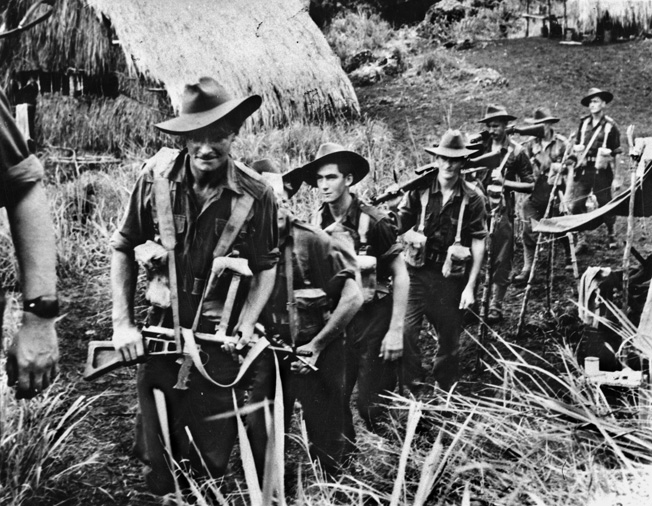
The Controversy of the ‘Backyard Wars’
During the campaigns on the New Guinea mainland and on Bougainville, voices were raised in Australia against Australian soldiers being assigned to the humble job of mopping up in bypassed areas while their American allies forged ahead in a blaze of public acclaim toward the Japanese home islands. As the Australian death toll steadily rose, criticism grew more vociferous and charges were laid that men were dying needlessly in wasteful offensives against “strategically impotent Japanese.”
The controversy over the “backyard wars” was taken up by the press and parliament, and General Blamey was called upon to explain the conduct of his operations to the government. He stated that his objectives were to destroy the enemy where this could be done with relatively light casualties, thereby freeing territory and liberating the native population and, where conditions were not favorable for the destruction of the enemy, to contain him in a restricted area by the use of a much smaller force. This latter action was, as MacArthur had stated, to be applied to all bypassed Japanese. Blamey’s explanation was accepted by the government.
Discontent with the backyard wars had begun to infect the Air Force. In April 1945, at Morotai, from which Australian air crews were flying what they called “drudgery flights against targets that had no military significance,” eight decorated fighter aces including Group Captains Clive Caldwell (28 confirmed kills), John Waddy (15) and Wilfred Arthur (10) resigned their commissions in protest against operations that contributed nothing to ending the war.
Taking New Britain
Allied intelligence estimated there was a total Japanese Army-Navy strength of 38,000 on New Britain; it was in fact 93,000 concentrated mainly around Rabaul on the Gazelle Peninsula. Rabaul had been a small town and port before the Japanese built it into a fortress, their strongest bastion in the South Pacific, with a system of underground tunnels dug around it and filled with ammunition and supplies of all kinds.
The island is about 311 kilometers long by an average of about 50 wide. The Gazelle Peninsula was where some 40,000 of the island’s people lived.
The Australian 5th Division, a militia division commanded by Maj. Gen. Alan Ramsay, a World War I veteran of France and the Middle East and New Guinea, began taking over from the Americans on New Britain in October 1944.
Ramsay decided to establish bases well to the east of the main American base at Cape Gloucester. The first to arrive was the 36th Battalion of the 6th Brigade; it took over from the Americans at Cape Hoskins and promptly began patrolling toward Ea Ea. Other patrols began ranging eastward, using a few American barges and two wrecked Japanese barges they managed to repair to carry supplies. The rest of the brigade arrived in dribs and drabs and by January 1945 had established a base at Ea Ea not far from the narrow neck into the Gazelle Peninsula. Patrols throughout the area found only abandoned Japanese positions.
The greater part of the 5th Division landed at Jacqinot Bay on the south coast in November, the nearest anchorage to Rabaul not then occupied by the Japanese. All units began moving closer to Rabaul.
While the Australians were caught up in several small battles with the Japanese, troops of the New Guinea Battalion (Papuans and New Guineans officered by Australians) distinguished themselves with deep patrolling, skillful ambushing, and taking out Japanese positions. Also, two groups of the Allied Intelligence Bureau (AIB) were operating against the Japanese in the interior. Each group consisted of a few Australian officers and noncommissioned officers and 140 native soldiers. They called air strikes on Japanese targets, harassed them in any way they could, and carried on a very successful guerrilla war.
Heavy fighting developed in the Waitavalo-Tol area in March 1945 when the 19th Battalion crossed the Walwut River under fire and fought its way forward for nine days against well-dug-in Japanese. Then the 13th/32nd Battalion took over and in some hard fighting drove surviving Japanese from the area.
By May, the 5th Division had established a firm line across the neck of the Gazelle Peninsula, achieving its main objective to contain the Japanese on the peninsula.
When the war ended and Rabaul surrendered, the division was surprised to learn that it had been containing a force equivalent to five depleted but experienced divisions, among them 19 generals and 11 admirals. Australian casualties were 53 killed, 21 who died of other causes, and 140 wounded.
New Guinea
Major General J.E.S. “Ocker” Stevens’s battle-hardened 6th Division, veterans of Greece, Crete, Libya, Syria against the Vichy French, and Papua New Guinea, began arriving at Aitape on the northeast coast of Australian New Guinea in late 1944 to take over from the Americans. Because of the shortage of shipping, it would be almost four months before the last of the division arrived.
Stevens’s orders were to defend airfield and radar installations in the Aitape-Tadji area, prevent movement westward of Japanese forces in the area, seize every opportunity for the destruction of these forces, and to give maximum help to the AIB and Australia and New Guinea Administrative Unit personnel in their tasks of gaining intelligence, establishing patrol bases, and protecting the native population. Stevens had little information on which to plan his campaign.
The 2/6th Cavalry (Commando) Regiment of the division was among the first to arrive at Aitape. The commandos quickly began patrolling along the coast toward Wewak, where the Japanese 18th Army was concentrated, and into the hills where the Japanese were raiding village gardens for food. The Japanese 18th Army, commanded by General Hatazo Adachi, consisted of about 35,000 troops in three divisions. As at Bougainville, they were cut off from supplies, reinforcements, or evacuation by sea. They were tending their gardens, racked by tropical diseases, and “sustained only by their faith in the Emperor and the Imperial Army.”
One of the first commando patrols, about 40 miles east of Aitape, entered a deserted native village where, in one of the huts, they found a dozen dead Japanese soldiers. They had died of starvation. There was no food in the village, and the vegetation around it had been stripped bare. Other patrols found small groups of starving Japanese and took them prisoner. One patrol, in a brief clash with two Japanese soldiers, killed one and the other escaped. The condition of these two, in comparison with the skeletal condition of other Japanese, surprised the commandos until they found evidence of cannibalism in the form of bodies with pieces cut from them and cooking utensils with pieces of human flesh in them.
General Stevens began his offensive by sending his 16th Brigade along the beach toward Wewak; a battalion of his 17th Brigade and two squadrons of commandos, all he could keep supplied by air drops, were sent into the Torricelli mountains toward Maprik. The weather was atrocious, the monsoon rains unending. Progress was slow, and, as the troops moved closer to Wewak and Maprik, Japanese resistance stiffened. Malaria was becoming a drain on the troops in both the swampy coastal areas and in the mountains despite daily doses of antimalarial drugs.
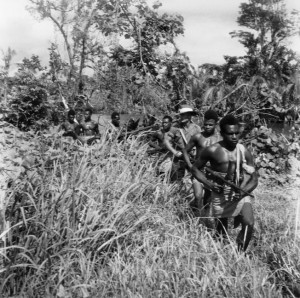
By mid-December, the 16th Brigade had cleared the area between the Danmap and Danmul Rivers, halfway between Aitape and Wewak. When the 19th Brigade relieved the 16th in January 1945, the 16th had killed 434 Japanese for the loss of 36 of its own and lost seven others crossing the raging Danmap River.
The tiny native coastal village of But now became important in the advance along the coast. It was on a small inlet that was protected from the seas and suitable for use by landing craft. The primitive coastal road was almost unusable, and lack of road-building equipment made repairs almost impossible, meaning that supplying the forward troops was always uncertain. There was an airstrip at But; however, its condition was uncertain. Landing supply transports into But inlet was the only means of keeping up the volume of supplies needed by the troops.
The 2/2nd Battalion was given the task of determining Japanese strength in the But area and whether Japanese artillery covered the inlet. Captured documents made it clear that the Japanese were aware of But’s importance and that they were determined to hold it at all costs. The battalion made a fast but thorough reconnaissance of the defenses—bunkers of sand-filled 44-gallon drums reinforced with coconut logs and concealed weapon pits—and after a wet night and little sleep B Company led the attack on the bunkers and gun positions on sloping ground around the inlet. The Japanese fought desperately, but by the end of the day the inlet and airstrip were in Australian hands. Every Japanese soldier had died at his post.
There were still many Japanese in the area, and these withdrew to the south with the 16th Brigade in pursuit along the coast to Dagua and the 17th in pursuit in the mountains toward Maprik. Maprik, with its airfield, was captured after some hard fighting, and when Dagua was captured, the 16th Brigade was relieved by the 19th. By mid-May the country around Wewak had been secured, and by the end of the month the Japanese had been driven away from the coast and were bottled up in a small, mountainous area by the two brigades. By now many of the units of the Australian division were down to half strength or less.
“The final action of this campaign [was] typical in so many respects—short, sharp periods of fighting; dogged defense by the Japanese; bitter platoon and company actions over pieces of ground that lacked any kind of significance except for the troops actually on them,” an officer reported. “When news of the Japanese surrender came through it was greeted very quietly by the veterans of the 6th Division, the only emotion unspeakable relief.”
Notices in Japanese were placed around the perimeter of the Japanese positions telling them of the capitulation and inviting them to surrender. None did.
In 10 months the 6th Division had advanced some 62 miles along the coast, killing about 9,000 Japanese and taking 269 prisoners. The division lost 442 killed and 1,141 wounded. More than 16,000 were admitted to the hospital, mostly with malaria, skin diseases, dysentery, scrub typhus, and dengue fever.
The Little-Known Borneo
General MacArthur had been planning a campaign on Borneo for some time. Control of the island, the third largest in the world, with its large deposits of oil and its harbors and airfields, would be useful as a springboard for a campaign to free the Dutch East Indies. The Joint Chiefs were lukewarm toward MacArthur’s proposal for the Borneo operation but gave their approval when he told them that failure to carry it out would “produce grave repercussions with the Australian government and people.”
Little was known about Borneo, 830 miles long by 600 at its widest, except that about 30 percent of it was, before the war, under British protection while the rest of it was included by the Dutch in their East Indies empire and that oil was produced at some places on the coast. A few rubber plantations were scattered throughout the island.
The Japanese brought hundreds of prisoners of war and civilian internees from Malaya, Singapore, and the Dutch East Indies to prison camps on Borneo. It was also known that in 1943 some 2,500 Australian and British prisoners were brought from Singapore to build an airfield at Sandakan on the northeast coast. When the airfield was completed, the surviving prisoners were marched into the interior. When the war ended only six of the prisoners, who had escaped into the jungle, were found alive.
The veteran First Australian Corps was to be used for the campaign. It consisted of the 7th Division, the 9th Division, and a reinforced 26th Brigade group. It was commanded by Lt. Gen. Sir Leslie Morshead, who had commanded the 9th Division during the siege of Tobruk and the Battle of El Alamein. The corps would be commanded directly by MacArthur’s headquarters, bypassing Blamey.
Using the corps on Borneo was MacArthur’s way of excluding it from the Philippine operation. The 7th Division would capture Balikpapan, the 9th Division would attack at Brunei Bay, and the 26th Brigade Group would land at Tarakan. This brigade group included two battalions of pioneers, a commando squadron, a squadron of tanks, and an antiaircraft regiment, in total 12,000 troops.
The Invasion
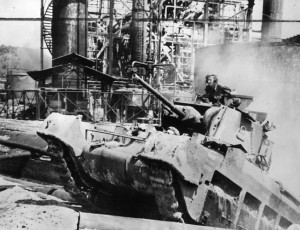
In anticipation of an invasion of Borneo, in early 1945 agents of the AIB and Z Special Force were operating there, reporting shipping movements, establishing intelligence networks, and locating targets for bombing. Their activities were stepped up. Five AIB/Z Force teams were landed around the coast of North Borneo, and three teams dropped by parachute in Sarawak to gather information on Japanese forces and dispositions and arm and train guerrillas. Some of these were Special Operations Executive agents sent from Britain and given jungle training in Australia, and some of the teams were reinforced with Australian commandos who were parachuted in.
The Australian 9th Division was shipped from Morotai to Brunei Bay in LSTs and smaller LCIs, each craft carrying double the numbers of soldiers it normally carried. It was a horrendous journey with hardly any of the basic facilities required by the troops, and luckily their landing at Brunei Bay on June 10 met with only minor resistance.
The fighting began a week after the landing. The Japanese had withdrawn into a tangle of ridges covered with thick rain forest and fringed by swamps. Here they would stand and fight.
An attack by tanks was repulsed, and so for the next five days the feature was bombarded by 140 tons of artillery shells, by naval gunfire, and bombing and strafing. On the morning of June 21 the Australians attacked again. Two companies of the 2/28th Battalion supported by tanks and flamethrowers quickly overran the Japanese, whose numbers had been depleted by the constant bombardment.
Advancing Inland
The Australians quickly pushed inland and met little opposition. Hugely outnumbered, the Japanese disappeared into the hills, and the Australians called a cease-fire. Australian losses in north Borneo were 114 killed and 221 wounded. The Japanese lost about 1,500 dead.
Tarakan Island had two oil fields producing some 500,000 tons a day and was defended by over 2,000 Japanese soldiers. On April 30, the day before the main landing at Tarakan, the commando squadron and a battery of artillery of the 26th Brigade Group were landed on Sadua Island between Tarakan and Lingkas on the main island of Borneo, where the guns gave protection for a party of engineers as they made gaps in the beach obstacles. The next day, preceded by bombing and shelling, the two battalions of the group landed on the beach at Lingkas with the port of Tarakan town three miles inland.
They met with little opposition. Some fierce fighting developed over the next few days, but by the fifth day after the landing Tarakan airfield had been secured. The Japanese fell back to a series of strongpoints in the north and east from which they could launch raids on the airfield. They had to be eradicated.
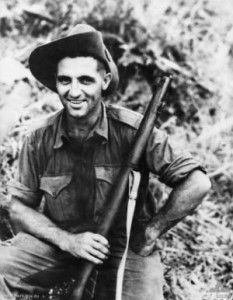
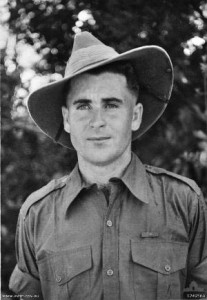
Lieutenant Thomas Derrick’s platoon was involved in an attack on two strongly defended knolls. A number of his soldiers were dead, others wounded, and he himself was wounded by five machine-gun bullets in his body. Still, he continued directing the attack until the knolls were knocked out. He died in the hospital. Derrick was already a legend, receiving an award for bravery in North Africa and the Victoria Cross for valor and promotion from the ranks to lieutenant for leadership at Sattelberg in New Guinea. His death was a blow felt throughout the group.
Another legendary soldier of the campaign was Private Leslie Starcevich, a Bren gunner, veteran of Syria, Tel el Aisa, El Alamein, and New Guinea. His platoon was charged with taking out three Japanese machine-gun posts, one behind the other on the slope of a hillock before the town of Beaufort.
As the platoon readied for the attack, Starcevich stood up and walked calmly toward the first machine-gun post through a hail of bullets. He silenced the post; then, in full view of the Japanese who continued to shoot at him, he reloaded his Bren and walked ahead to wipe out the remaining two machine-gun posts. Most of the platoon witnessed it but could not believe that, of the hundreds of bullets fired at Starcevich, none had hit him. Beaufort was taken with little opposition the next day.
Rendezvousing with Dyaks
While action was going on around Beaufort, one battalion marched 70 miles south along the coast to Seria. Seria was taken after a short fight, but the Japanese had set the town’s 37 oil wells on fire. The whole area was hung over with thick smoke.
The battalion’s engineers and pioneers, helped by local people, set about putting the fires out. None of the engineers had seen an oil well before, and their improvised methods for dousing the fires were described by experts who were later flown in as “primitive” and “highly dangerous.” But most of the fires were put out or brought under control.
While some of the battalion fought the fires, others moved on south to take Lutong, with its oil refinery and nearby oil wells and the airfield at Miri. The refinery was in ruins and the wells on fire, and once again the soldiers were used as firefighters and for cleaning up. They found the bodies of dozens of slaughtered Indian prisoners of war and more of them barely alive. They told the Australians that the Japanese garrison of more than 500 was in the jungle outside town.
Patrols went looking for them but met up with only native Dyaks carrying severed Japanese heads. The Dyaks happily joined the patrols, and more Japanese were caught and killed. Then the patrols were recalled as the military had completed the job of securing the ports and coastal towns and clearing the oil and rubber-producing areas of Japanese. AIB and Z Force agents and their guerrillas replaced the military patrols, and these reportedly killed 1,800 Japanese.
Fierce Resistance at Balikpapan
Balikpapan, on the east coast of Dutch Borneo, was the last phase of the Borneo operation and the scene of the fiercest fighting. General Blamey regarded it as an unnecessary operation and opposed it, but the First Australian Corps had been removed from his control. The only reason for capturing Balikpapan was to use it as a base for the invasion of Java, but as American forces were now on Okinawa and knocking on Japan’s door, an invasion of Java had little point at this stage of the war. Nevertheless, the Balikpapan operation went ahead.
Before the war, Balikpapan was a major port and oil refinery that processed oil piped from two fields to the north and shipped in from Tarakan, Ceram, and Java. Each year it shipped out two million tons of fuel oil and other petroleum products.
The Japanese had fortified Balikpapan with networks of bunkers, trench systems, and concrete strongpoints, and a continuous 14-foot-wide antitank ditch that could be flooded with burning oil ran for miles behind the beaches. Nevertheless, it was decided the Australian 7th Division would make a direct assault on the town rather than land along the coast and have to fight its way through jungle and swamp.
Before the attack, Balikpapan was heavily bombed by American and Australian planes. The area around the town was thoroughly scouted by patrols. Minesweepers removed mines from the sea before the port, and Navy underwater demolition teams cut channels through the obstacles on the landing beaches. On July 1, two brigades of the 7th Division landed on a 2,000-yard stretch of beach close to the port and moved quickly forward, smashing any resistance they came upon.
That night they rested among the ruins, the night alight with the flames from burning oil-storage tanks. The following morning, the two Australian brigades moved forward again, followed by the third brigade mopping up any pockets of resistance and groups of Japanese who had infiltrated the first advance.
By the third day, the brigades held a beachhead five miles wide and a mile deep, including an airfield; military barracks; the port with its homes, warehouses, and workshops; and seven wharves that would take oceangoing ships. However, all had been bombed and shelled into rubble.
The country around Balikpapan was reasonably open, but it soon became thick bush dominated by a multitude of fortified hills, knolls, and ridges riddled with tunnels occupied by the Japanese. Many were armed with naval and field guns. They were bombed and strafed and shelled with little effect, and it fell to companies, platoons, and single soldiers to clear them and fight off counterattacks and raids.
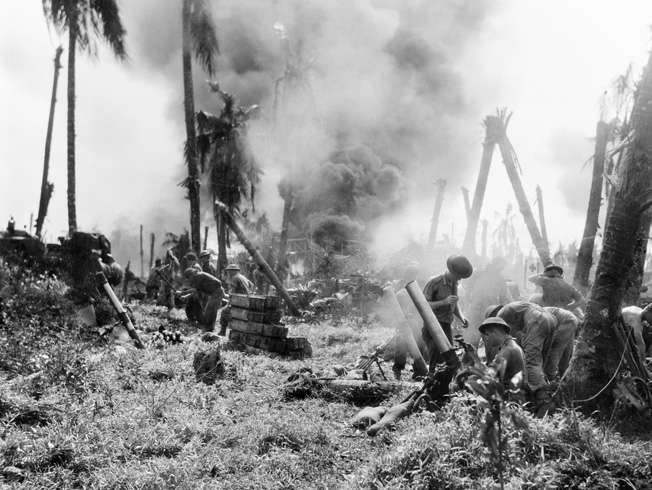
A few days after the landing it was found that because of the sea swell it was not possible to land enough stores and supplies over the beach. The port would have to be used, but the Navy was reluctant to do so until assured that the other side of the bay was clear of Japanese guns. A battalion of troops and some commandos landed across the bay, and a sweep of the area found half a dozen guns that had been destroyed. Evidence showed that more guns had been moved back into the hills. These were pursued and some destroyed, while the others were driven out of range of the port.
Fighting continued until the beginning of August, when all the objectives of the landing had been secured and a Dutch civil affairs unit installed. On August 16, Japanese forces were ordered to lay down their arms, and leaflets were dropped from planes advising them of Japan’s surrender.
Major Tom Harrisson and Major Rex Blow were leading teams in the search of a large organized force of Japanese in the upper Trusan River area when they came upon an upland plain and found themselves in the middle of a battle between the Japanese force and hundreds of tribesmen. For two more days the fighting continued until the Japanese concentrated on a low hill for a last stand. It was here that Harrisson and his party managed to hold off the blood-lusting tribesmen and send in a Japanese interpreter under a white flag.
An hour later, the interpreter came back with Captain Fujino, the most senior officer left alive, who handed Harrisson his sword. Nearly 350 soldiers followed him and laid down their arms. It was October 29, 1945, and this was the last surrender on Borneo. It was the end of the war in the Southwest Pacific Area.
A General’s War
The war ended with the use of Australian soldiers in these campaigns and the campaigns themselves a matter of deep controversy. The controversy had begun with soldiers’ letters home saying they were involved in mopping-up operations that were of no importance to the ending of the war with Japan. These soldiers’ view of the war found its way into the hands of elected representatives and the newspapers, and questions were asked of the government in the national parliament.
What emerged from it was that the government had compelling reasons for continuing the fighting beyond the obvious aim of defeating the Japanese, reasons concerned with Australian self-interest after the war. The government affirmed that it was of vital importance to the future of Australia and its status at the peace table that its military effort should guarantee an effective voice. It was this that confirmed for the troops, and for many people in Australia, that the troops were fighting “a politicians’ war.”
In effect, they were not. They were fighting a generals’ war, the war of Sir Thomas Blamey, whose decisions stepped up the fighting with the bypassed Japanese and launched the offensives on the islands of Bougainville and New Guinea, decisions he was neither competent nor authorized to make. The campaign on Borneo was at the direction of General Douglas MacArthur. The politicians simply went along with the generals, and the fighting and dying continued until after the war officially ended.
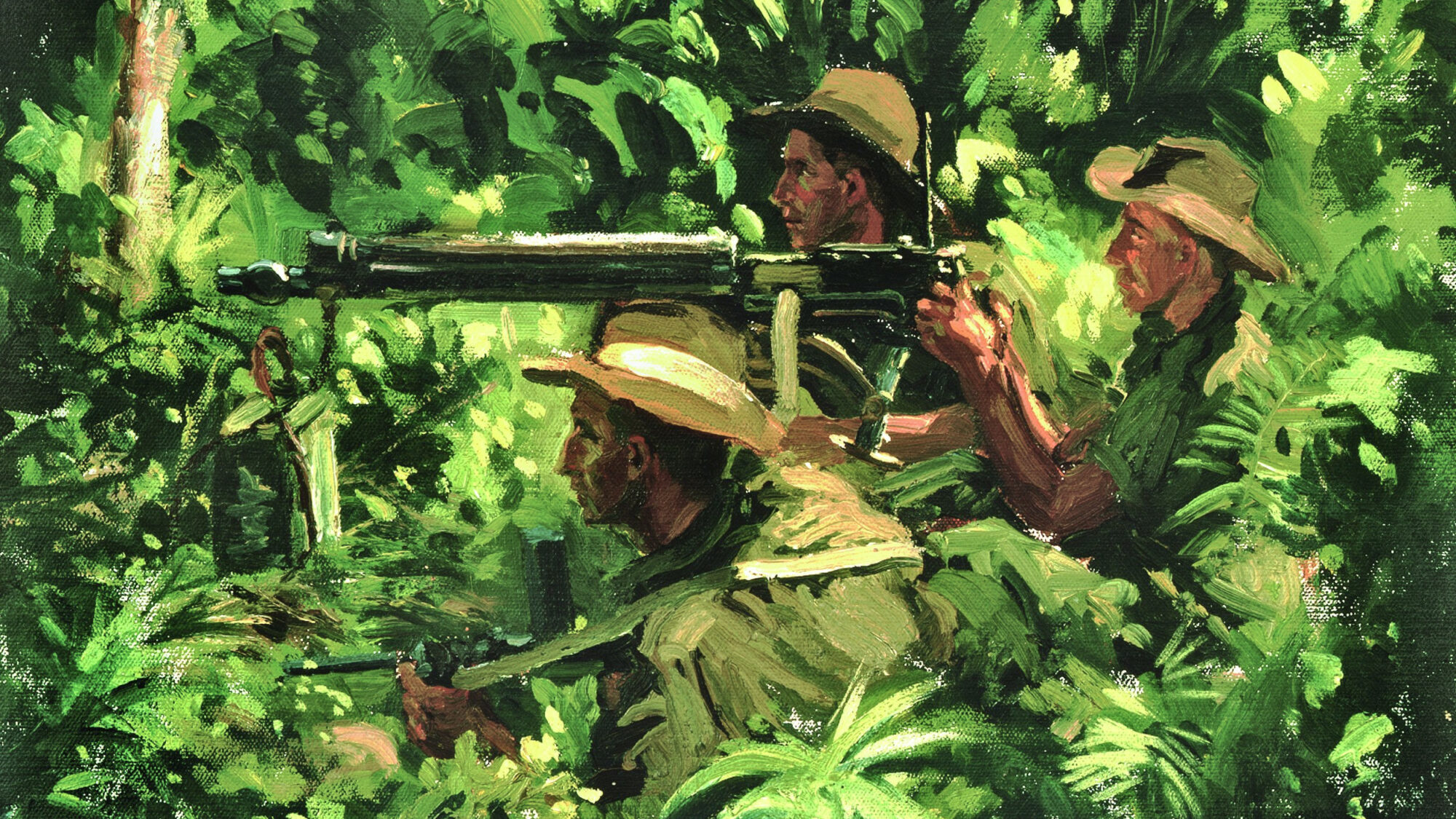
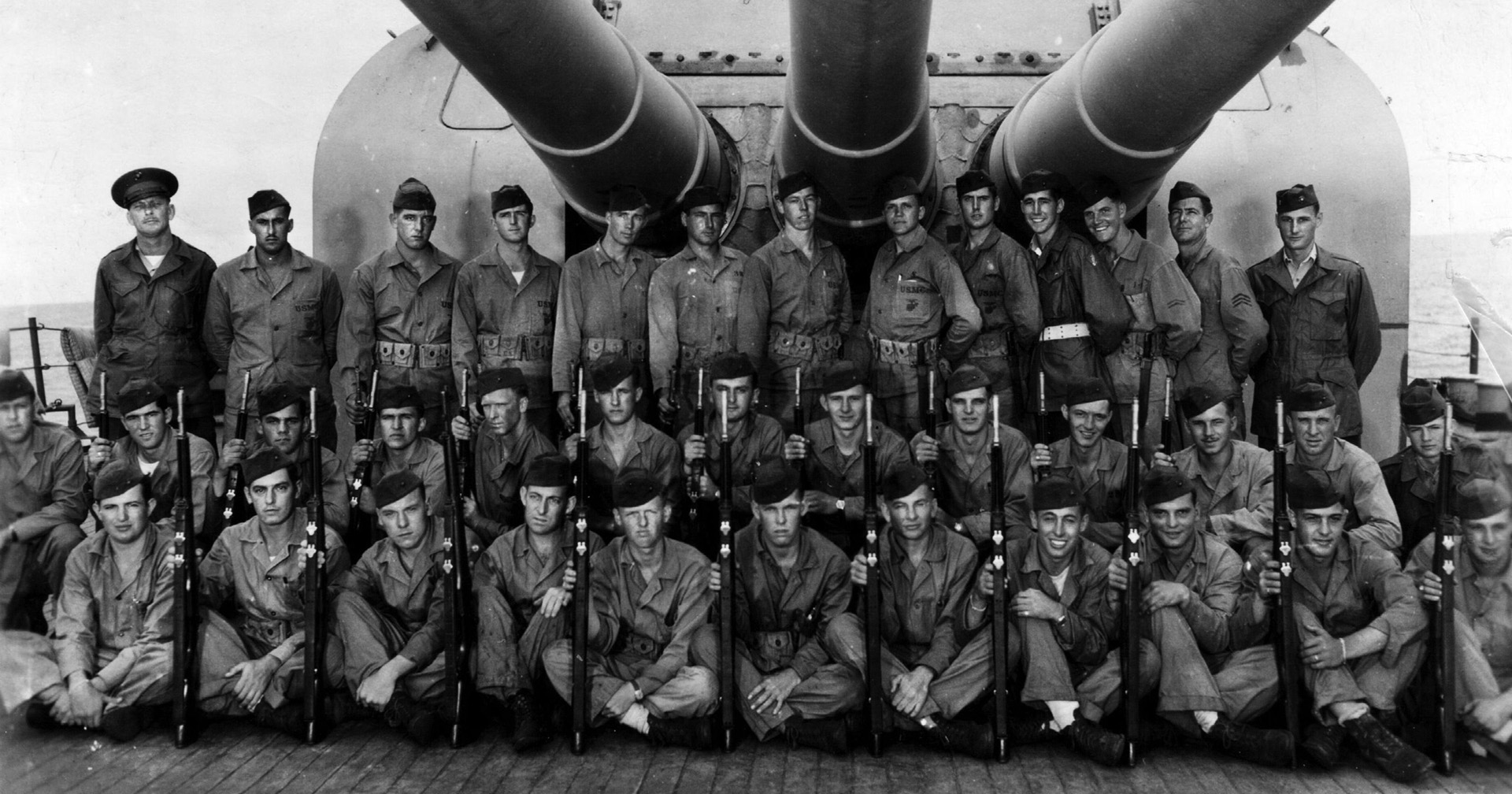
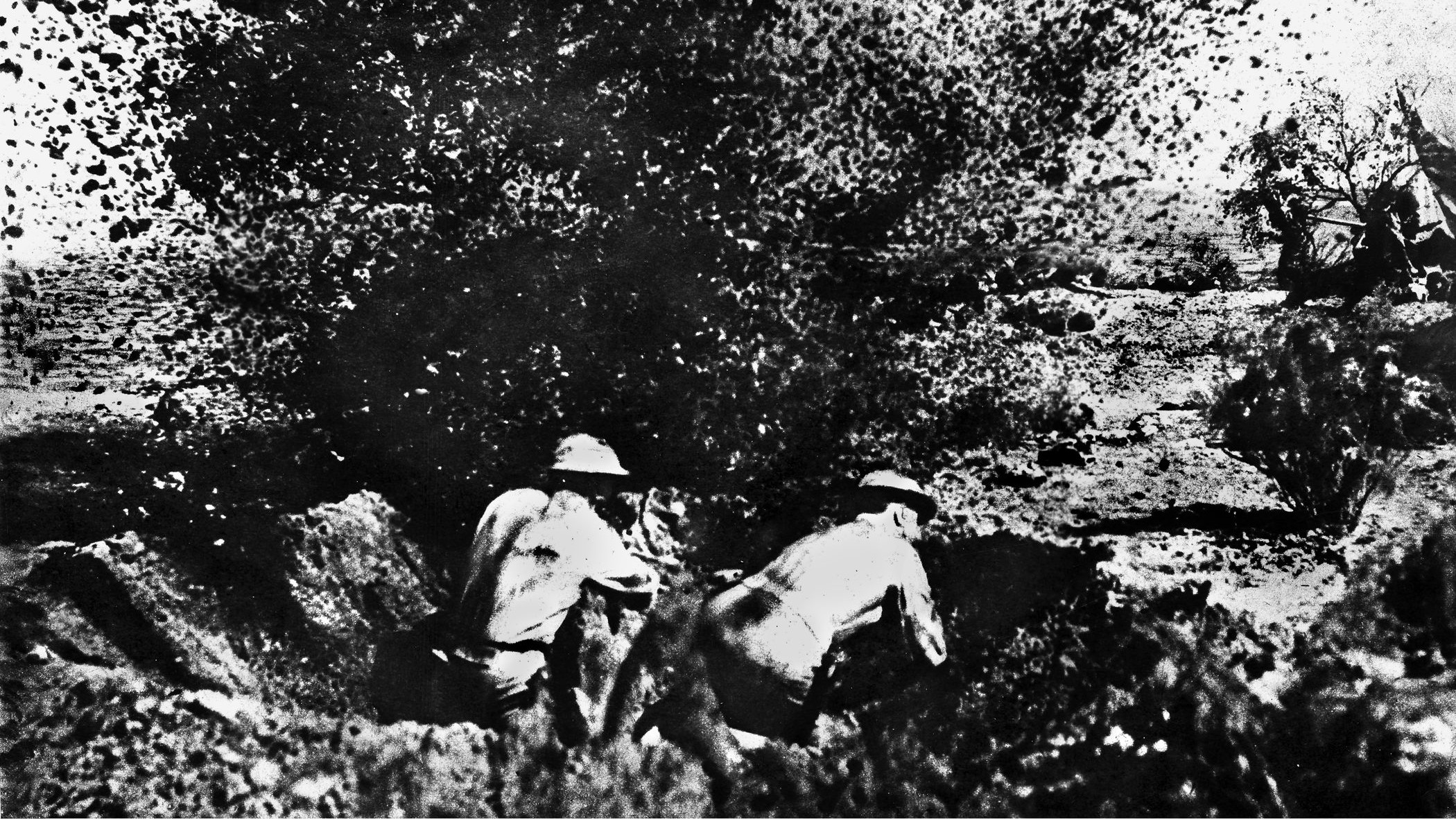
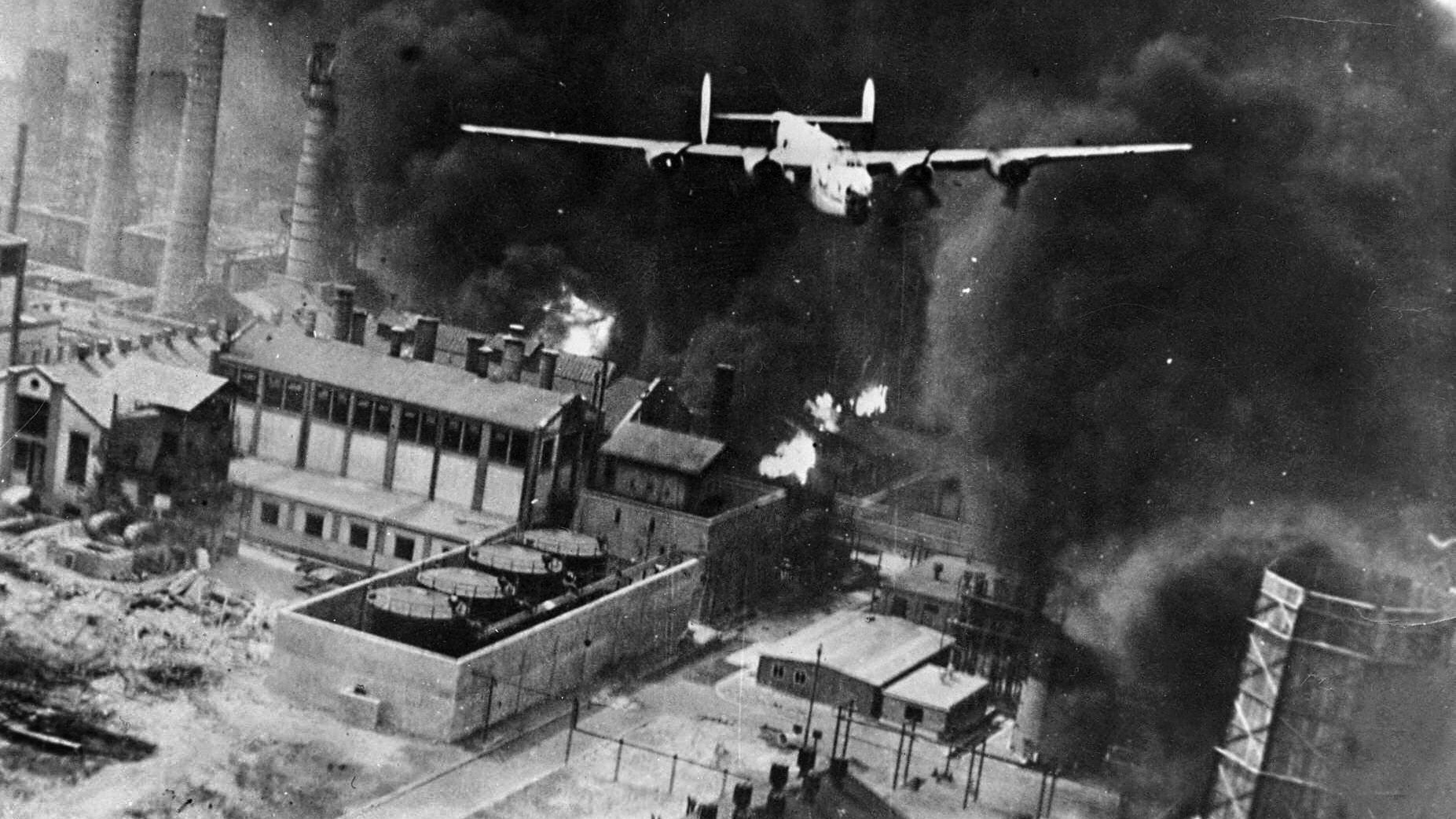
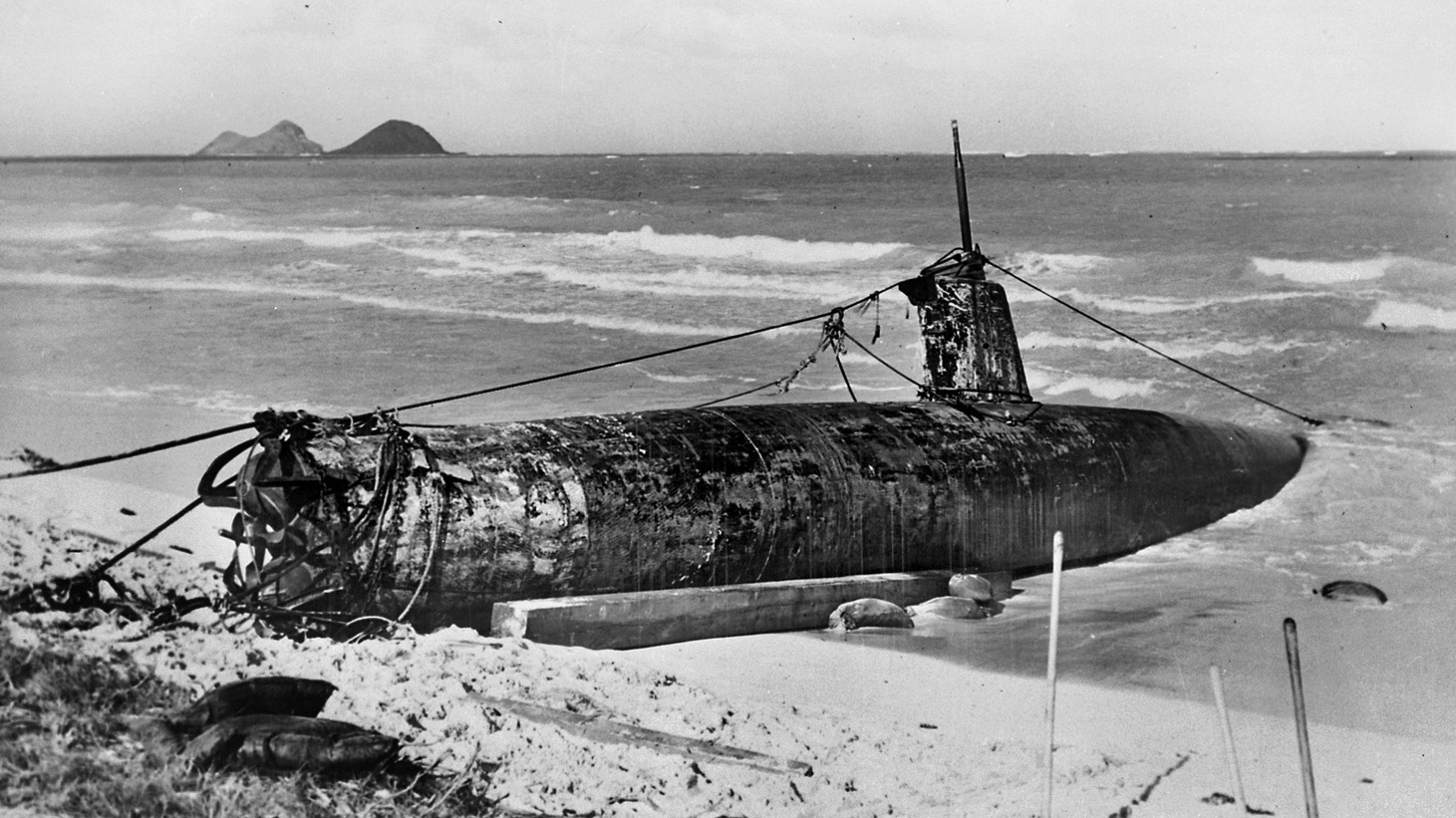
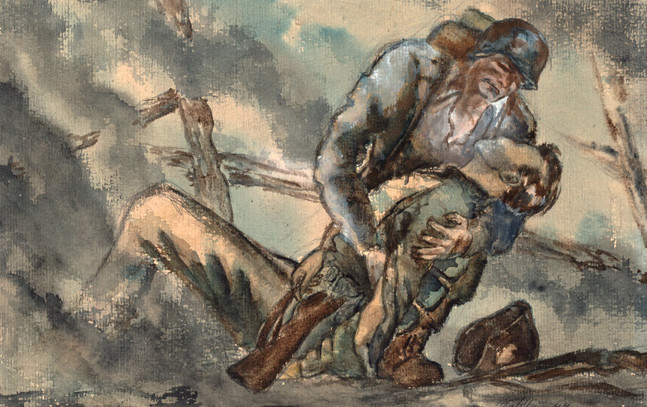
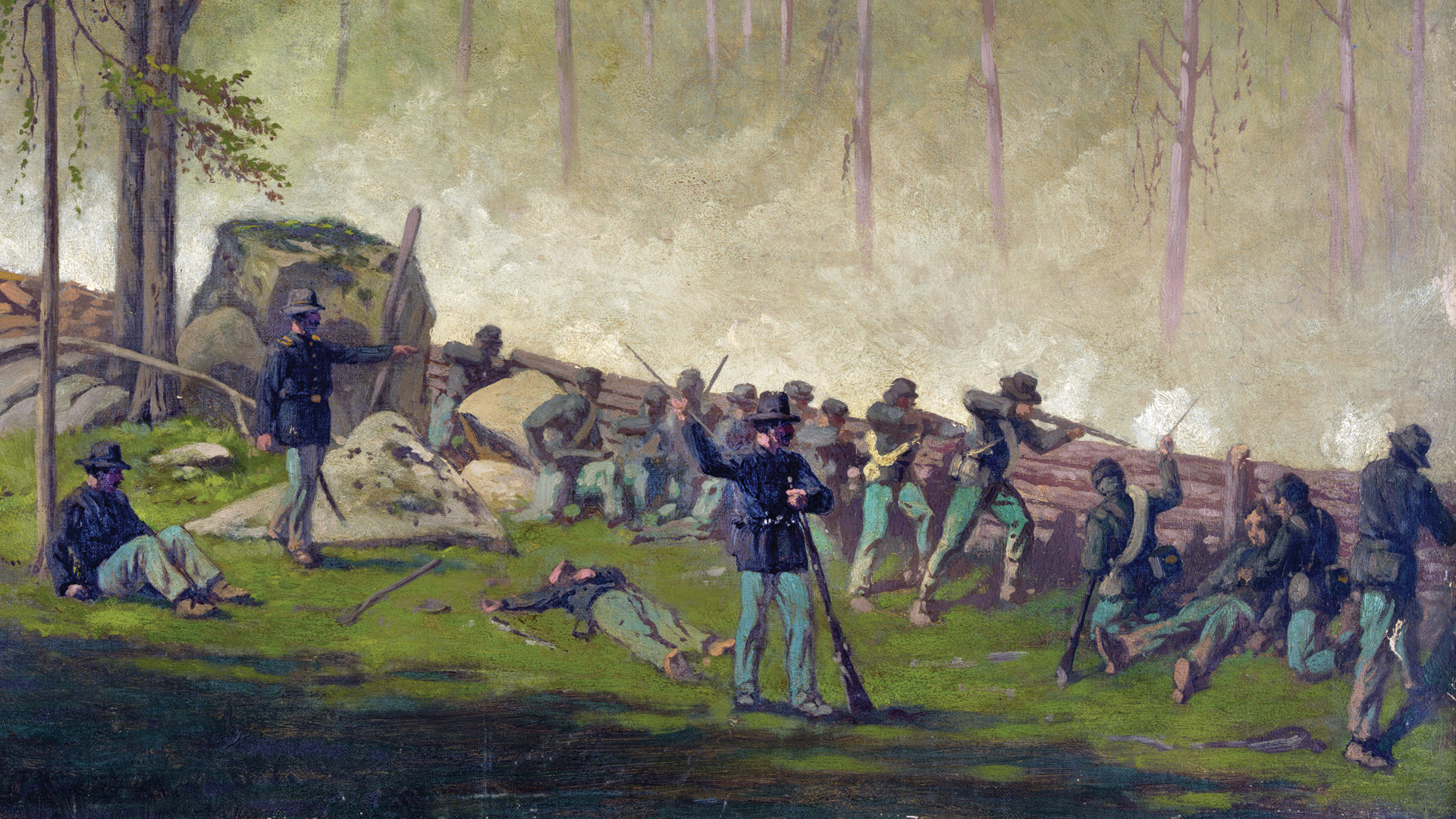
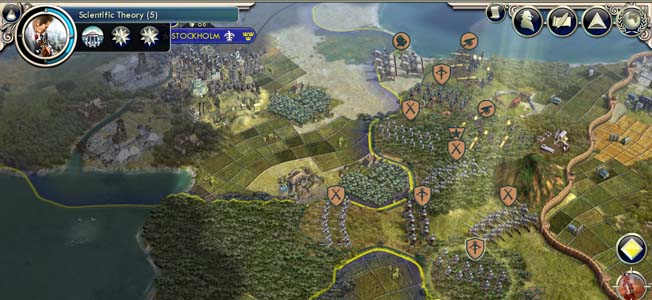
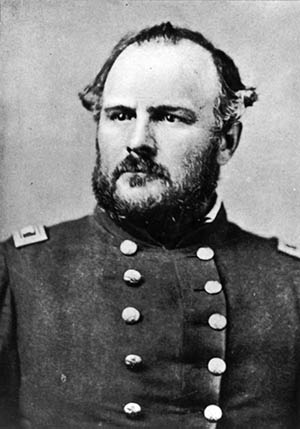
Join The Conversation
Comments
View All Comments